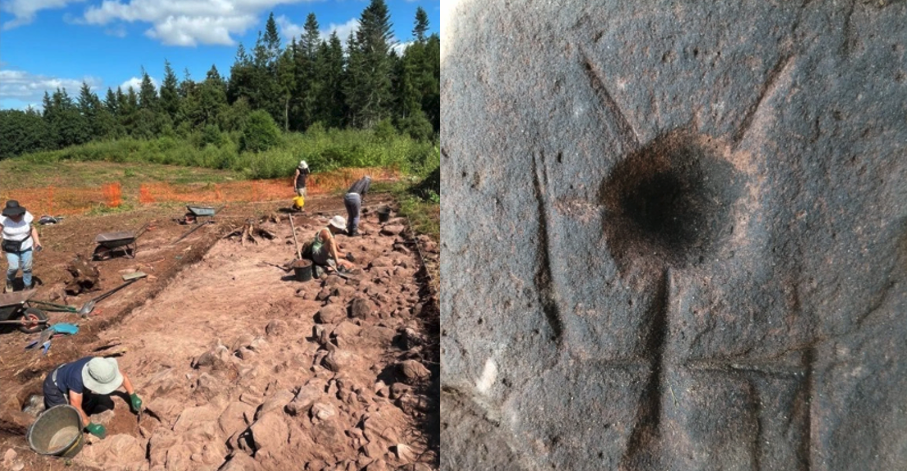Archaeologists don’t pretend they understand everything humankind has done through the centuries, but they always appreciate all there is for them to discover and study. But every so often, something comes along that is truly a puzzler.
Like this strange find at a site called Nesscliffe Hill last year. Excavating archaeologists came across a weird sandstone carving. They had no idea what was before them, but they called it Nessglyph and are now sourcing answers from the public on what they have.
It’s made up of some straight lines and a hollowed-out circle and may have been created by a metal instrument. But who make it? And, why? All researchers know is that Nesscliffe Hill was once an Iron Age hillfort later occupied by the Romans.
Photo Credit: IFL Science
Dr Paul Reilly from the University of Southampton in a statement,
“The circular cup shape and the straight lines are indicative of two different types of technology, grinding and carving.”
After returning to the site to continue excavations that started in 2019, Reilly and his colleague, Dr Gary Lock from the University of Oxford, uncovered the glyph in a ditch originally explored in the 1950s and was backfilled.
Reilly added,
“We can speculate that the Nessglyph is figurative, with the cup mark being the head.
It has two long horns and two small horns, a central body line and two arms, one held up and the other down, the upward one showing a possible hand holding a pipe or a weapon.”
However, since approaching the public for suggestions, the team have received many responses with other interpretations from all over the world.
Reilly told the BBC, that
“People have suggested that we need to rotate the stone and it could represent a pregnant woman, others have suggested the character is holding a weapon, others, a tool of some description, and even that it may be an archer.”
It is also worth noting that Nesscliffe lies within the putative territory of the Cornovii, a name that has been suggested to reference to the ‘horned ones’. There is the possibility of a connection to a horned deity cult in the Roman army as depicted at several military sites across Britain.”
Photo Credit: IFL Science
Still puzzled, the archaeological team encourages anyone with information, or even a guess, as to what the Nessglyph might represent to contact them.
If you think you’ve got the answers, send them to Paul Reilly at p.reilly@soton.ac.uk or Gary Lock at gary.lock@arch.ox.ac.uk.
